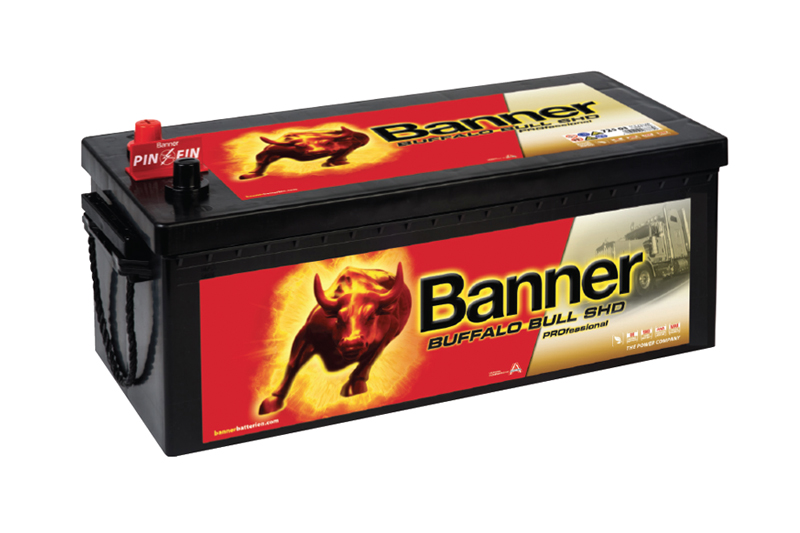
Given the rapid emergence of lithium-ion batteries and the development of e- and hybrid vehicles, it begs the question – is there a future for traditional lead-acid batteries and, if so, how is this likely to shape-up? Banner answers the question.
Already, leading original equipment battery manufacturers such as Banner have declared their intention to focus on developing the next generation of traditional start-stop lead acid batteries; ones that will deliver further improvements in relation to charging and power output though the deployment of optimised cell design and other technology-driven design improvements.
Looking at the evidence that is available to support such a decision, it appears that both leading industry analysts and the most recent studies undertaken on this all-important subject come to the same conclusion: the decision has been made for very good reason.
Newly-elected Chairman of the Consortium for Battery Innovation (CBI), Dr. Christian Rosenkranz outlines a positive future for lead batteries. Indeed, he predicts a high-growth performance for lead-acid batteries over the coming years and sees it as a technology necessary for a decarbonised future.
He states: “Lead batteries will deliver a low carbon future, with market analysts, Avicenne Energy, predicting the lead battery market will increase by 61,000 MWh between 2025 and 2030.
“As is already well documented, lead batteries enable clean mobility in start-stop and micro-hybrid vehicles. These cleaner vehicles, which utilise advanced 12V batteries (lead batteries) for vital on-board functions and start-stop functionality, deliver up to 10% in fuel savings and reductions in carbon emissions. As such, it is predicted that the global demand for 12V battery technology will increase by 236 million batteries by 2040 – an increase of 63% in 20 years. And with vehicles representing more than 30% of final energy consumption in Europe, the transition to an energy-efficient, decarbonised transport sector is central to achieving its climate change targets,” he adds.
Such confidence in the demand for lead-acid battery also emanates from a recent study commissioned by a consortium of industry associations including: ACEA – European Automobile Manufacturers Association; JAMA – Japan Automobile Manufacturers Association Inc; KAMA – Korea Automobile Manufacturers Association; EUROBAT – Association of European and Industrial Battery Manufacturers and ILA – International Lead Association.
Entitled ‘Automotive Battery Technology Trends Review’, with authors being Ricardo Strategic Consulting, the study’s executive summary concludes: “Lead-acid batteries are the only technology capable of fulfilling all the major 12V requirements, from startstop functions to reliable auxiliary batteries. No other alternative technology can achieve this functionality at this time.”

So what is it about lead-acid batteries and how they are produced that drove them to arrive at this summary? To begin with, through 2030, the future of the European vehicle parc will comprise of a complex suite of partially and fully-electrified products, including micro-hybrids, mild-hybrids, full-hybrids, plug-in hybrids and battery electric vehicles. And almost all light-duty vehicles are likely to feature a 12V board net, and therefore either a 12V Starting Light Ignition (SLI) battery, or a 12V auxiliary battery.
As background, globally over 400 million 12V lead-acid batteries are produced each year to supply both OEMs and the aftermarket. In Europe, around 60 million batteries are required each year.
Enhanced Flooded Batteries (EFB) and Absorbent Glass Mat (AGM) batteries provide significant improvements compared to conventional lead-acid flooded batteries in charge acceptance and cyclical durability, and have been developed for micro-hybrid applications. Indeed lead-acid batteries, especially EFB and AGM ore extremely stable and durable in comparison to competing technologies. Failure modes and safety of lead batteries are also well understood by the battery supply chain. Furthermore, for SLI applications they are covered by established European and International standards, including battery testing procedures and service requirements.

However it is the field of recyclability that lead-acid batteries steal a march, something Banner’s CTO, Thomas Bawart is keen to emphasise. “Combinations of 12 V lead-acid starter batteries and lithium-ion-based, high-voltage drive batteries are standard to the latest e- and hybrid vehicles, and this will remain the case in the coming years. The main advantage lead-acid brings to the fore, however, particularly in relation to today’s modern and highly efficient absorbent glass mat (AGM) and enhanced flooded batteries (EFB), is their sustainability.
“Banner’s environment-friendly start-stop batteries not only help to save considerable quantities of fuel, they are designed and manufactured to deliver the highest collection ratio of all recyclable goods, including glass and paper,” he concludes.
Such a positive recyclability performance, certainly from a Banner perspective, centres on their proven closed production cycle, one that extends from manufacture to recycling and which is based on a process of continual enhancements, minimisation and prevention with regard to environmental impact. Not surprisingly, as a founder member of the Starter Battery Environmental Forum (UFS), Banner demonstrate a recycling quota of virtually 100%, and this has been driven by the investment over many years of several million Euros annually in environmental protection measures. As a result, the Banner production process today utilises 98% recycled lead, whilst 80% of battery box material consists of polypropylene recyclate. Furthermore, since 2015 the company’s entire electricity needs have been supplied by renewable energy sources, 60% of which is used for battery charging.
From a global perspective, given that the proven performance of lead-acid batteries goes hand-in-hand with their ability to help deliver a decarbonised future, it is safe to say that their use in modern vehicles will continue for many years to come. So the future of such technology looks bright indeed.








